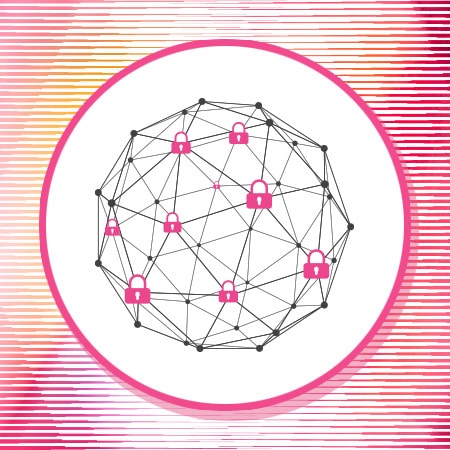What is Cybersecurity Mesh Architecture (CSMA)?
One of the greatest security challenges that organizations face is security silos. Many companies deploy a range of point security solutions with the goal of addressing specific security risks. As a result, security architectures become complex and difficult to monitor and manage, leading to missed detections and delayed responses.
CSMA is a concept developed by Gartner to help companies move past siloed security to a more collaborative and flexible approach to security. CSMA is designed to make security more composable and scalable by modularizing security functions and enabling them to interoperate through a set of supportive layers. By making security more cohesive and collaborative, CSMA enables an organization to achieve better security with fewer resources.
This approach to security is well-suited to the shift towards hybrid, multi-cloud environments where organizations may need to deploy consistent security across diverse, evolving, and expanding IT environments. By defining a framework in which discrete security solutions can work together towards common goals, CSMA enables a more collaborative, flexible, and scalable approach to meeting evolving security needs.
What Are CSMA Foundational Layers?
CSMA is designed to provide a scalable, interoperable, and composable framework for various security controls and solutions to interoperate more effectively. CSMA’s foundational layers define core security goals and functions that various security solutions can collaborate to achieve.
CSMA defines four foundational layers, including:
- Security Analytics and Intelligence: Solutions at this layer focus on collecting, aggregating, and analyzing security data from various security tools. Based on this data, solutions such as security information and event management (SIEM) and security orchestration automation and response (SOAR) tools can analyze potential threats and trigger appropriate threat responses.
- Distributed Identity Fabric: This layer focuses on providing identity and access management services, which are central to a zero trust security policy. Capabilities include decentralized identity management, directory services, identity proofing, entitlement management, and adaptive access.
- Consolidated Policy and Posture Management: Managing and enforcing consistent security policies across various environments requires translating policies for different environments. Solutions at this level convert policies into the rules and configuration settings needed for a particular environment or tool or can provide dynamic runtime authorization services.
- Consolidated Dashboards: An array of discrete and disconnected security solutions impedes security operations by forcing context switches between multiple dashboards. This layer provides integrated visibility into an organization’s complete security architecture, enabling more efficient detection, investigation, and response to security incidents.
Main Benefits Of CSMA
CSMA defines foundational layers that allow security solutions to better work together. This provides a number of security benefits to the organization, including:
- Intelligent Security Design: CMSA defines foundational layers around core security capabilities. This enables an organization to design a security architecture and deploy solutions based on these foundational laters.
- Consistent Security: CSMA enables an organization to achieve more consistent security by defining an architecture that allows security to extend as needed. This helps to ensure that an organization can ensure consistent protection of evolving and expanding infrastructure.
- Flexibility and Scalability: CSMA is designed to extend an organization’s security architectures to include new infrastructure or solutions as needed. This enables corporate security to keep pace with the evolution of expanding, distributed IT infrastructure.
- Improved Collaboration: CSMA is intended to improve collaboration between an organization’s various security solutions. This improves the speed and effectiveness of threat detection, response, and prevention.
- Simplified Deployment and Management: CSMA creates an underlying structure for deploying security solutions, making it faster to deploy and configure new solutions. Also, the flexibility and adaptability of the architecture enable it to evolve to meet changing business and security needs.
- Improved Efficiency: CSMA integrates an organization’s security architecture, eliminating the need for security personnel to operate and context switch between various tools. This enables them to more efficiently deploy, configure and use solutions, freeing up time and resources for other critical security tasks.
CSMA With Check Point
At its core, CSMA is geared toward simplifying security architecture by encouraging collaboration and integration of a corporate security architecture. Check Point Infinity provides consolidated security across an organization’s entire IT environment, enabling centralized security management and integrated threat prevention and response.
To identify your organization’s security gaps and where your existing security strategy may be falling short, take the Check Point Security Checkup. You’re also welcome to learn more about improving the efficiency of your organization’s security strategy in this whitepaper.



















